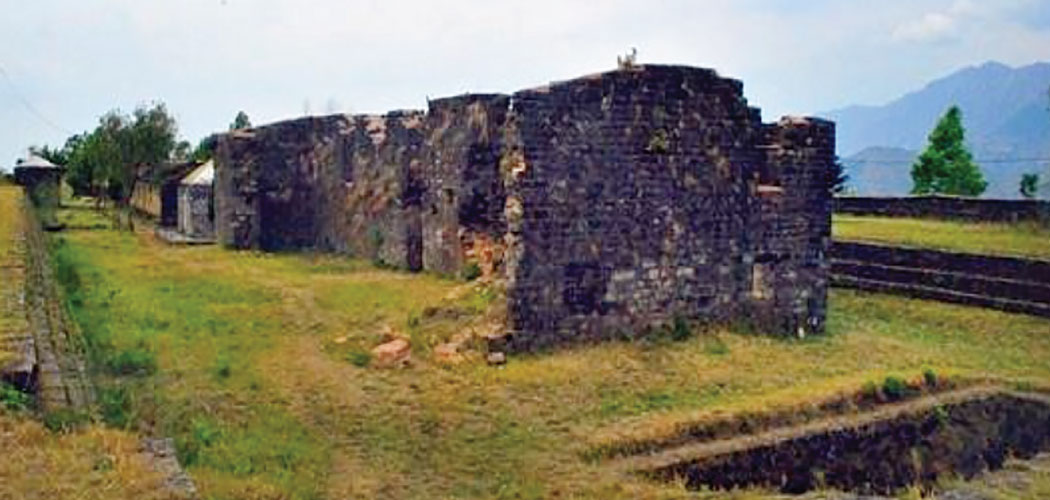
SATV 1 Jun, Kathmandu: Makawanpur Gadhi Palace, located 16 kilometres east of Hetauda along the Kanti Rajpath road, is a historic, archaeological and strategically important site, is now drawing more and more tourists.
It has become a popular destination for study, observation, educational tours and also for domestic tourism.
Domestic tourists from Makwanpur and neighbouring districts such as Chitwan, Kathmandu, Pokhara, Bara, Rautahat, and Sindhuli are frequently visiting this site.
The historically significant Makwanpur Gadhi Palace also stands out in the field of eco-tourism. Situated on high ground, the palace offers beautiful views that attract visitors and its importance shows clear archaeological value.
Ward Chairperson of Makwanpur Gadhi Rural Municipality-2, Bakhan Singh Pakhrin said that domestic tourists including parliamentarians, local representatives, educational tour groups, and cooperatives and staffs of other organisations regularly visit the site.
Being a major tourist destination near the provincial capital, visitors from almost every district of the province come here, he added. During special occasions and festivals such as New Year, Krishna Janmashtami, Fagu Purnima, and Ekadashi fairs, the site draws up to 7,000 domestic tourists daily.
According to him, the Department of Archaeology is currently undertaking interior renovation work, including restoring the fort area, replacing roof and developing a mini museum.
In coordination with the local government, efforts are also underway to build gardens, stairways and picnic spots in the outer area, he said.
He further informed that the provincial government is also engaged in the conservation of Makwanpur Gadhi Palace.
Located on a hilltop at an altitude of 1,017 metres above sea level, the historically and archaeologically important site deserves to be visited and seen by all Nepalis.
He urged both domestic and international tourists to explore it.
Makwanpur Gadhi has a unique history. Before the establishment of modern Nepal, it preserved the living legacy of the Sen dynasty.
Representing traditional yet advanced architecture, Makwanpur Gadhi reflects the military importance and defensive strategies of the state during that era.
There is Bansha Gopal Temple inside the Makwanpur Gadhi, where Lord Krishna is said to have been chained with iron shackles.
Below the temple is a cave from which Krishna used to move in and out, said Dambar Prasad Ghimire, priest of the temple.
At that time, mustard was cultivated in Chitwan, where he would travel. Due to Krishna’s habit of going out at night and returning only in the morning, villagers feared misfortune, so they kept him chained, said Ghimire.
Historical records show that the kings of the Sen dynasty ruled here from the early 13th century. It is popularly believed that the name ‘Makwanpur’ originated from the name of the powerful king Mukunda Sen, evolving through variations like Mukundapur, Makandapur, and Mukunpur.
Kings from Lohang Sen to the last ruler Digbandhan Sen ruled from Makwanpur Gadhi as their capital for about three hundred years.
It is believed that Makwanpur Gadhi was built during the reign of King Tula Sen. The Gadhi is divided into three parts: Thulo Gadhi (large fort), Sano Gadhi (small fort) and Dhunge Gadhi (stone fort).
Thulo Gadhi contains two palaces, temples, and water tanks. About 300 metres southwest of Thulo Gadhi lies Sano Gadhi and about two kilometres northeast is Dhunge Gadhi.
Makwanpur Gadhi played a significant role in supporting the unification campaign, keeping the foreign armies at bay, preserving the nation and presenting Nepal as an independent state on the global stage.
Kedar Prasad Neupane, Chairperson of the Makwanpur Gadhi Tourism Development Coordination Committee, said there were several forts in Makwanpur, including Makwanpur Gadhi Palace, Dhunge Gadhi, Ambabas Gadhi in Bakaiya, Chisapani Gadhi in Bhimphedi, Palung Gadhi, Tistung Gadhi, Chitlang Gadhi and Kotthumki Gadhi in Thaha Municipality.
He emphasised the need for conducting study and conservation of all forts with archaeological significance to promote tourism.



















